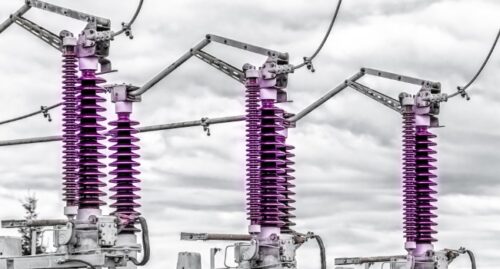
6.19.23 – Security Today – By Dave Carzoli
Picture this – you have just completed a relatively large security system installation for a new enterprise client. The cost of this new system was well into the hundreds of thousands of dollars, representing a significant investment for both you and the deploying organization. But less than a month after install, the customer calls you upset and in a panic.
An overnight power surge has destroyed the new IP camera system, taking its valuable data along with it. The customer is now on the hook for system replacement and is quick to blame you. As bad as this scenario sounds, it could have been avoided entirely with the simple application of surge protection.
Surge protection has long been thought of as an add-on to security systems. In truth, they are a critical piece of equipment that end users and installers should take advantage.
Surveillance, fire safety, access control, emergency communications and countless other security systems rely on a variety of electronic devices to perform their necessary functions. Given that each of these systems is made up of potentially hundreds of end point devices, the financial investment to deploy such systems is significant. One damaging power surge has the potential to render these investments useless within seconds.
Not only does surge protection protect organizations from incurring excessive costs related to system repair or replacement, but it also helps organizations avoid secondary costs and risks experienced during the time in which the security system was inoperable. For example, an alarm system experiencing downtime due to a power surge puts an organization at risks to threats the alarm system was designed to protect, including theft, break-ins, fire damage, vandalism, criminal incidents and liability.
The same could be said for video surveillance systems that organizations rely on to prosecute crimes while defending against false claims. If the surveillance system and its backup systems are unprotected during a power surge, the company could be found liable for a defamatory claim with no evidence to prove otherwise.
To protect an organization’s operations across all industries, it is the responsibility of the system designer or integrator to recommend surge protection and educate customers on its benefits, but often this does not happen. It is often viewed as counterintuitive to offer a solution that actively reduces billable services. The thinking goes, if surge protection prevents system damage, it limits the opportunity to earn money from repairs and replacements.
Although this may be true, system repairs and replacements generally reflect negatively on the system installer, regardless of whether the damage resulted from a power surge that was not their fault.
Repercussions of unaddressed voltage irregularities, such as system failure, loss of customer confidence and frequent repairs, can harm a brand and result in lost business. Negative reviews spread quickly through online platforms and word of mouth, causing incalculable damage.
Conversely, integrators who offer surge protection are perceived as industry experts who prioritize their customers’ best interests. Professionals that go beyond the basics to deliver high-quality installations and customer service are usually rewarded with strong brand loyalty.
Still, many integrators shy away from adding surge protection to a bill of materials (BoM) for fear that it may price them out of winning the project. Or they feel like they are offering their client a piece of equipment that they don’t really need. The key to adding surge protection to a sale lies within the integrator’s ability to communicate the value of surge protection to their customers.
Making a case for surge protection is not difficult considering the costs associated with surge protection are usually less than the sales tax on the system and can be added to a BoM as an optional protection upgrade. This allows for the opportunity to convey the return on investment that surge protection offers in a pressure-free way.
Some integrators have even started using “surge refusal forms” to let customers make this decision explicitly, confirming that they have been informed of surge protection options and specifically decided not to go ahead. This is a valuable tool that ensures surge protection is being discussed openly and the customer has the choice to make an informed decision. Second, it provides a measure of protection for the integrator regarding liability and guarantees about the operation of the system.
After a new security system install, end users not usually thinking about the negative effects a power surge could have on their new system. But sometimes all it takes is a gentle reminder that their new, $250,000 security system is worth protecting. That is why it is important to explain the value of surge protection to your customers, and, in doing so, your business can reap the benefits of this overlooked line item.
